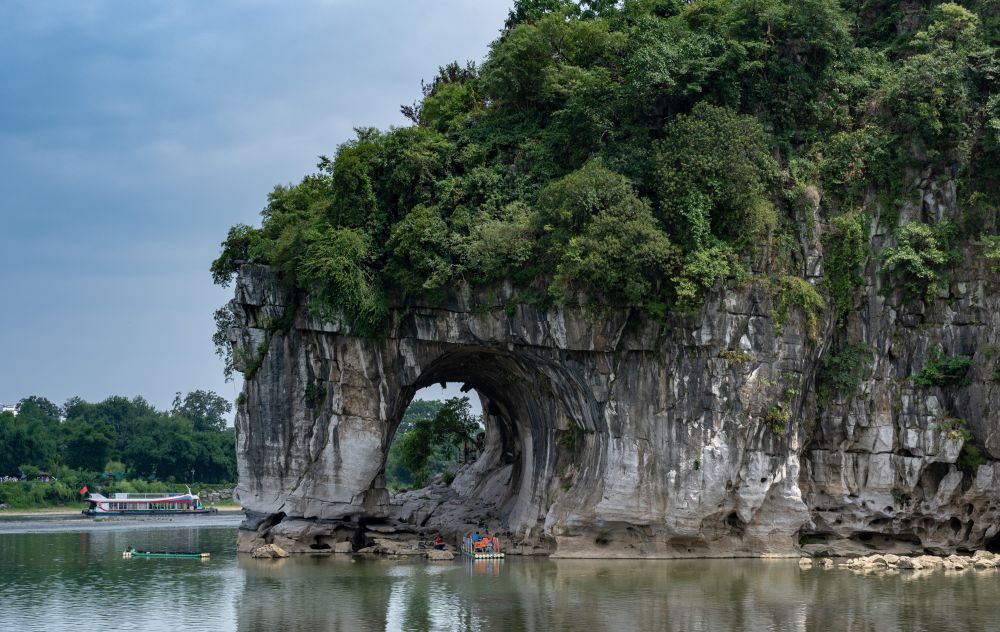

Elephant Trunk Hill, known as 'Xiangbishan' in Mandarin, is one of the most iconic natural landmarks within the picturesque city of Guilin, China. Resembling an elephant dipping its trunk into the Li River, this geological marvel has been a source of inspiration and admiration for centuries. Located at the confluence of the Li River and the Peach Blossom River, Elephant Trunk Hill provides a stunning visual that is quintessentially representative of Guilin's unique karst landscape.
The history of Elephant Trunk Hill as a tourist destination dates back to the Tang Dynasty when it was already celebrated in poetry and art. Its image has been etched in traditional Chinese paintings and literary works, making it an enduring symbol of Guilin's natural beauty. The hill is also home to several important historical sites including the Puxian Pagoda, which dates back to the Ming Dynasty, and the Water Moon Cave, where visitors can find ancient inscriptions said to be more than 1,000 years old.
With the opening of China to international tourism in the late 1970s, Elephant Trunk Hill quickly became a must-see destination for visitors to Guilin. The local government recognized its potential and made significant investments into developing the surrounding areas, including building infrastructure that made the hill more accessible to tourists.
In the following decades, Elephant Trunk Hill witnessed a notable increase in domestic and international visitors. This boost in tourism led to further development, including the creation of a park around the hill, offering boat rides on the Li River and the construction of viewing platforms for photographing the scenic vistas.
Today, Elephant Trunk Hill remains a top attraction in Guilin, drawing crowds from all around the world. The latest tourism trend emphasizes sustainable and environmentally friendly practices, as the region becomes more conscious of preserving its natural landscapes. Tour operators and local authorities are increasingly promoting eco-tourism, with guided tours that educate visitors on the region's unique geography and biodiversity.
In addition to traditional sightseeing, adventure tourism has also grown in popularity. Activities such as river rafting, rock climbing, and hiking in the surrounding areas complement the experience for those looking for an active exploration of Guilin's karst terrain.
Technological advancements have also led to new ways of experiencing Elephant Trunk Hill. Augmented reality (AR) apps now provide interactive tours, overlaying historical and cultural information onto the live view of the hill, enriching the experience for tech-savvy travelers.
As tourism continues to evolve, the focus on cultural heritage and sustainable practices is expected to shape the future of visitation to Elephant Trunk Hill. The site remains a testament to the continued allure of natural landmarks that embody the cultural essence of their locales, inviting travelers to explore the depths of their history and beauty.
Maintaining the delicate balance between visitor enjoyment and preservation will be key in ensuring that Elephant Trunk Hill can be enjoyed by generations to come, reinforcing Guilin's reputation as a premier destination for those seeking both serenity and adventure in China's vast landscape.